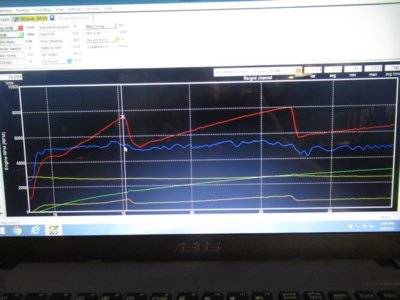Sonny
It’s all fun til the rabbit gets the gun.
Specs:
440 1970 Belvedere with 276 highway gears
Holley 4160 750 cfm, heavy vac spring, added 4150 conversion kit, jets prim 68, sec 66! 4.5 power valve
dual plane, Edelbrock
mild-ish cam (.5 lift),
Keith black raised pistons, stock 452 heads
msd dizzy with blue and light silver spring, timing 18/35
Bought a new Holley 750 and runs good but wot air fuel ratio is 10-11, way to rich. So I bought the 4150 conversion kit and removed the 75 plate and installed 71 secondary jets. No change. For giggles went to 66s. Same no change. Reduced squirter from 31 to 28. Nothing. How is this possible?
Could it be:
1. The gears are so slow that the engine can’t rev enough to burn the fuel?
2. I’m using a hp fuel pump (up to 9 psi) and a cheap mr gasket fuel pressure regulator and 1/4” return line. Could the pump still be overcoming the needle with higher rpm and flooding? I have a Holley pressure regulator with a gauge port on the way from summit racing to see if this is it.
Any other suggestions? Due to the cars gearing and weight, I added the heavy vac secondary spring, lower power valve, and medium dizzy springs to delay the “all in” fuel.
440 1970 Belvedere with 276 highway gears
Holley 4160 750 cfm, heavy vac spring, added 4150 conversion kit, jets prim 68, sec 66! 4.5 power valve
dual plane, Edelbrock
mild-ish cam (.5 lift),
Keith black raised pistons, stock 452 heads
msd dizzy with blue and light silver spring, timing 18/35
Bought a new Holley 750 and runs good but wot air fuel ratio is 10-11, way to rich. So I bought the 4150 conversion kit and removed the 75 plate and installed 71 secondary jets. No change. For giggles went to 66s. Same no change. Reduced squirter from 31 to 28. Nothing. How is this possible?
Could it be:
1. The gears are so slow that the engine can’t rev enough to burn the fuel?
2. I’m using a hp fuel pump (up to 9 psi) and a cheap mr gasket fuel pressure regulator and 1/4” return line. Could the pump still be overcoming the needle with higher rpm and flooding? I have a Holley pressure regulator with a gauge port on the way from summit racing to see if this is it.
Any other suggestions? Due to the cars gearing and weight, I added the heavy vac secondary spring, lower power valve, and medium dizzy springs to delay the “all in” fuel.

















